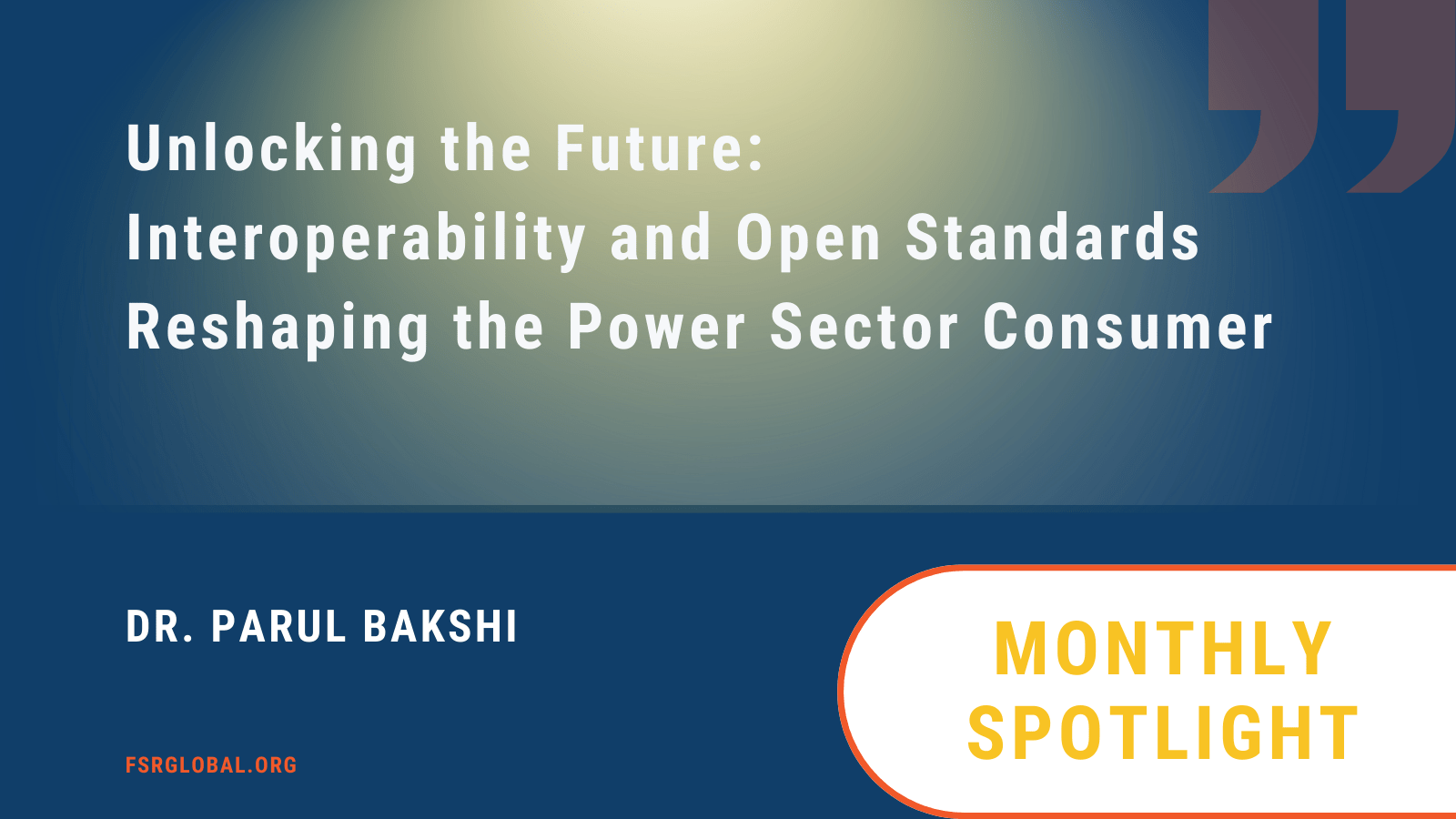MONTHLY SPOTLIGHT
Unlocking the Future: Interoperability and Open Standards Reshaping the Power Sector Consumer

In an era dominated by renewables and rapid technological advancements, the power sector is undergoing a transformative shift. The emergence of bi-directional electricity flows, driven by distributed energy systems, necessitates a holistic integration of various levels of the grid ecosystem. At the forefront of this revolution are smart home-connected devices and appliances, poised to play a pivotal role in shaping the future of the power grid.
The smart appliances segment is surging, with an estimated 37.3 million active households globally by 2028, marking a substantial growth from 3% penetration in 2022 to a projected 10.1%. This proliferation underscores the strategic importance of these appliances in influencing both the power system and the broader smart grid ecosystem. To navigate the complex landscape of the smart grid, the Smart Grid Architecture Model (SGAM) framework becomes instrumental. This three-dimensional model integrates domains, zones, and layers, placing a strong emphasis on interoperability as the linchpin for smart grid success.
Interoperability, which can be defined as the capability of systems to exchange and use information, emerges as the key enabler for smart grids. SGAM further introduces interoperability layers, emphasizing the importance of seamless communication between devices, systems, and stakeholders.
Enabling open standard connectivity for home devices presents a wide array of benefits, transforming the dynamics of energy consumption and grid management. Let’s uncover some of these benefits – Firstly, it empowers effective Demand Response and Load Management as appliances seamlessly participate in demand response programs, optimizing energy usage precisely during peak demand periods. Coordinated appliances contribute significantly to Energy Efficiency, promoting an overall reduction in energy waste by intelligently managing power consumption. Moreover, the enhanced Grid Stability and Reliability achieved through interoperability facilitates better coordination of distributed energy resources, thereby mitigating the impact of intermittent renewables on the grid. The use of Appliance data for Data Analytics in Grid Planning offers crucial insights, optimizing infrastructure development based on real-time information. This approach not only results in Cost Savings for Consumers but also for utilities, as optimized energy usage translates into financial benefits for both stakeholders. The Integration of Renewable Energy becomes smoother through interoperable systems, allowing the seamless assimilation of renewable sources into the grid. Furthermore, Enhanced Customer Engagement is fostered as consumers actively participate in energy management, guided by real-time information and personalized recommendations. Lastly, the Adaptation to Smart Grids is made possible, playing a crucial role in facilitating seamless communication and real-time visualization while orchestrating Distributed Energy Resources (DERs) effectively.
Furthermore, stakeholder perspectives on the adoption of open standard connectivity reveal a landscape of opportunities and advancements across the energy sector. For Consumers and Prosumers, the expanding array of device choices serves as a catalyst, encouraging active engagement with the power sector. Regulatory enablers play a pivotal role in this, ensuring data protection and privacy, thus building consumer confidence in embracing smart technologies. Device Manufacturers, on the other hand, experience a paradigm shift, with open standards driving innovation and prompting the evolution of business models. Regulatory support becomes instrumental in fostering healthy competition and inclusivity within the market. From the Power Sector standpoint, real-time access to consumer data emerges as a transformative tool for effective grid management and planning. Active consumer participation, facilitated by open connectivity standards, becomes a reality. Regulatory enablers, including measures for consumer data protection, stand as crucial pillars supporting this transition towards a more interconnected and responsive energy ecosystem.
With a massive global consumer market, India is positioned to champion open standard connectivity in the consumer durable sector. A robust regulatory framework can align the industry, fostering interoperability not only at the consumer premise but also seamlessly linking with the power sector.
The synergy of interoperability and open standards presents a unique opportunity to reshape the energy landscape. By making informed choices and embracing a robust regulatory framework, stakeholders can propel the energy sector towards a future marked by collaboration, efficiency, and sustainability. The journey towards an interconnected energy future has begun, and the power is now in the hands of those who dare to innovate and adapt.
To know more refer to FSR Global’s Policy Brief: “Interoperability and open standards for home connected devices: Unlocking benefits for the power sector”, available on open access.
